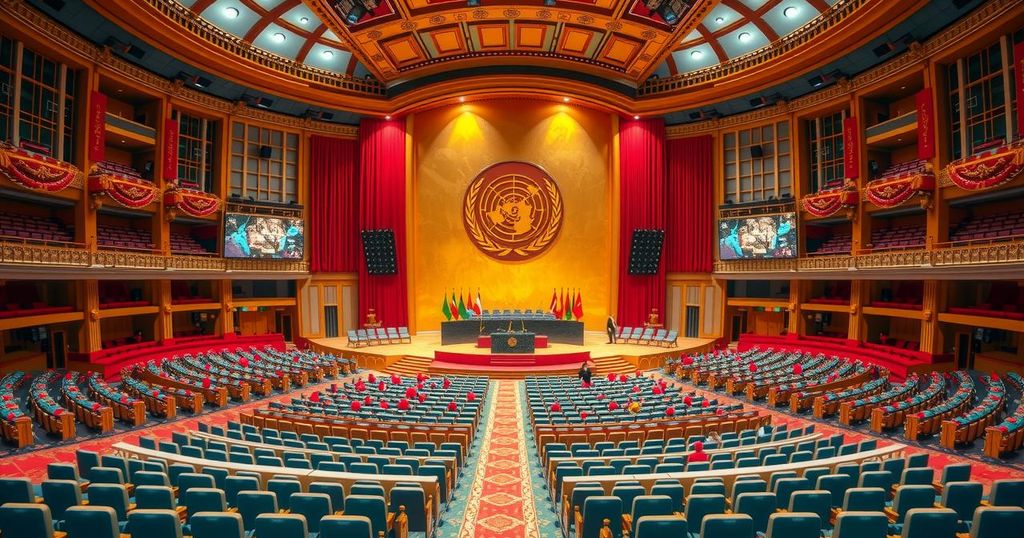The National People’s Congress in Beijing has set a GDP growth target of 5 percent for China amid caution over global economic challenges. Defense spending will increase by 7.2 percent, demonstrating a commitment to military expansion. The government is also seeking to boost domestic consumption, while maintaining a complex relationship with the private sector and the U.S.
The National People’s Congress is currently ongoing in Beijing, attended by nearly 3,000 delegates, including President Xi Jinping and senior Communist Party members. During this congress, Chinese Premier Li Qiang set a GDP growth target of around 5 percent for the year, acknowledging the significant challenges ahead. He emphasized that achieving this goal will require considerable effort due to a complex global economic environment, increasing protectionism, and a slowdown in world economic growth.
The trade dispute with the United States has added uncertainty to China’s export-driven economy. Additionally, the Chinese economy is experiencing a protracted downturn in the real estate and construction sectors, coupled with a challenging job market for the youth. To combat these issues, Beijing’s strategy includes promoting consumer spending to enhance domestic demand.
In the draft budget presented at the congress, defense spending is set to rise by 7.2 percent from the previous year, totaling approximately 245 billion dollars. This increase in spending aligns with trends from the past two years and signals Beijing’s commitment to military enhancement despite economic challenges. Reports indicate that China’s military capabilities include a significant fleet and an estimated 600 operational nuclear warheads.
A spokesperson highlighted that China’s defense spending has historically been below the global average, making up less than 1.5 percent of GDP. However, U.S. Department of Defense estimates suggest that actual military expenditures may be significantly higher than the official figures released by China.
NHK’s correspondent in Beijing, Nakamura Genta, remarked that the government has set a GDP growth target exceeding the 4.6 percent anticipated by the International Monetary Fund, signaling a determination to stabilize the economy. He noted that the path forward relies heavily on external factors, specifically ongoing trade relations with the U.S. Recent engagements between Xi Jinping and leading tech entrepreneurs, such as Jack Ma, indicate a potential pivot in government relations with the private sector, notably regarding technology initiatives.
Nakamura commented on the implications of this strategy, suggesting it may be aimed at countering U.S. semiconductor export restrictions. He questioned whether this approach would be sufficient to rebuild market confidence, indicating uncertainty about the future. The legislative session of the National People’s Congress will conclude on March 11.
In conclusion, the ongoing National People’s Congress in Beijing highlights significant economic and military priorities for China. The government aims for a 5 percent GDP growth despite formidable global challenges, while also escalating defense expenditures to reinforce its military strategy. Engaging with the private sector may signal a shift in economic policy, yet the ultimate success of these measures remains uncertain in the context of international tensions, particularly with the United States.
Original Source: www3.nhk.or.jp




